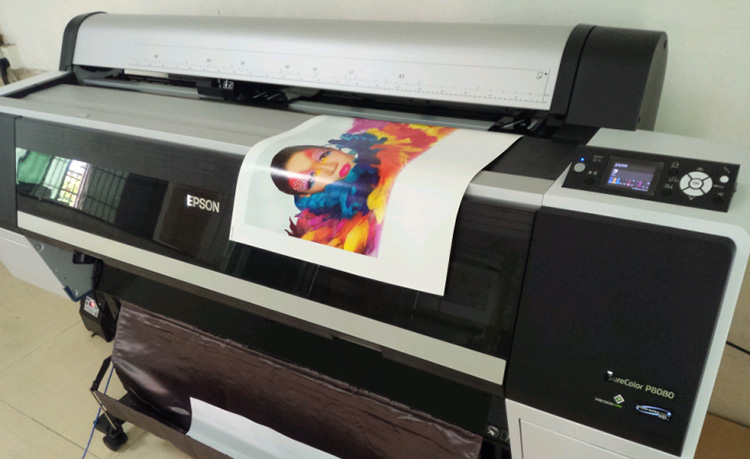In the printing field, the accuracy of color reproduction and the fidelity of the final output to the original design are paramount. This pursuit of precision has led to the development of various proofing methods, among which hard proofing stands out as a critical step in the pre-press process.

In this article, we discuss hard proofing in details, providing a comprehensive guide for designers, printers, and anyone involved in the production of printed materials.
What Does Hard Proofing Mean in Printing
Hard proofing, in the sphere of printing, refers to the process of creating a physical sample of the final print product before initiating the full production run. This sample, known as a hard proof, serves as a tangible representation of the output. It allows designers and clients to review the color, layout, and overall look and feel of the printed material in its intended physical form.
Unlike digital proofs, which are viewed on screen, hard proofs provide a hands-on opportunity to assess and approve the exact nuances of the print project.
The creation of a hard proof involves using the same substrates and printing techniques that will be employed for the final production. This approach ensures that the proof accurately reflects the final output, including the paper texture, ink color, and finishing options.
The meticulous nature of hard proofing printing allows for a level of precision and predictability in the printing process. That offering a safeguard against potential errors and discrepancies that could arise in the absence of such a detailed review step.
Moreover, hard proofing serves as a critical communication tool between all parties involved in the printing process. By examining a hard proof, designers, clients, and printers can engage in a collaborative review, making necessary adjustments and approvals before the print run begins.
This collaborative approach not only enhances the accuracy of the final product but also significantly reduces the risk of costly reprints and delays. Ensuring that the project adheres to the highest standards of quality from start to finish.
Why Hard Proofing is Matter
The significance of hard proofing in the printing process cannot be overstated. At its core, hard proofing is about achieving the highest possible fidelity between the original design and the final printed piece. This level of precision is crucial for several reasons, not least of which is the assurance of client satisfaction. When clients review a hard proof, they gain confidence in the final outcome, knowing that what they see is what they will get. This tangible proof acts as a seal of approval, ensuring that all elements of the design have been accurately translated into print.
Furthermore, hard proofing plays a vital role in identifying and rectifying potential issues before they escalate into costly mistakes. Issues such as color misrepresentation, layout errors, or typographical mistakes can be caught and corrected at the proofing stage, saving time, resources, and the reputations of all involved parties.
By investing in this step, businesses can avoid the repercussions of subpar print jobs. That including dissatisfied customers and the need for reprinting, which can be both expensive and damaging to the environment.
Additionally, hard proofing contributes to the overall efficiency of the printing process. By finalizing all details and making necessary adjustments based on the hard proof, the likelihood of delays and additional costs during the production run is minimized.
This efficiency not only benefits the bottom line but also supports tighter project timelines. Allowing for a smoother workflow and timely delivery of the final product. In essence, hard proofing is a critical investment in quality control, client satisfaction, and operational efficiency, making it an indispensable part of the printing process.
What is Hard Copy Proofing Good For?
Hard copy proofing serves multiple purposes in the context of printing and design, each contributing to the overarching goal of producing high-quality printed materials.
Firstly, it is an invaluable tool for color accuracy. Colors can appear differently on various screens and even more so when translated into ink on paper. Hard copy proofing provides a real-world reference, ensuring that the colors of the final print match the designer's intentions and the client's expectations. This is especially critical for brands where color consistency is key to their identity and marketing efforts.
Secondly, hard copy proofing is essential for assessing the physical attributes of the printed piece. The weight, texture, and finish of the paper, the application of special coatings or varnishes, and the impact of folding or binding techniques can all significantly affect the appearance and feel of the final product.
These elements are impossible to fully appreciate through digital proofs alone. A hard copy proof allows for a hands-on evaluation, ensuring that the physical qualities of the print meet the project's requirements and enhance the overall design.
Lastly, hard copy proofing facilitates clear and effective communication among all stakeholders. It provides a definitive reference point for discussions, making it easier to articulate feedback and make decisions. This collaborative review process helps to align the expectations of the designer, the client, and the printer, reducing the likelihood of misunderstandings and errors.
By involving all parties in the examination of a hard copy proof, the project benefits from collective expertise and insights, leading to a superior final product that meets or exceeds everyone's expectations.
Is Hard Copy Proofing Free?
The question of whether hard copy proofing is free is one that arises frequently in discussions about printing services. The answer, however, is not straightforward and can vary widely depending on several factors, including the printing company, the complexity of the project, and the specific requirements of the proof.
Generally speaking, hard copy proofing is considered a value-added service and, as such, often incurs an additional cost. This cost reflects the resources, time, and expertise required to produce an accurate representation of the final print.
But, some printing companies may offer hard copy proofing as part of their standard service package, particularly for large or high-value print jobs where the assurance of quality is paramount. Such as Chinaprinting4u, before approval mass printing, making a free hard copy( usually digital proof) for confirm.
It is also worth noting that the investment in hard copy proofing. Whether charged free or included in the project cost, is typically offset by the benefits it delivers quality assurance and error prevention.
Clients considering hard copy proofing should discuss the options and associated costs with their printing provider upfront. Transparent communication about the proofing process and its expenses can help to manage expectations and ensure that the project remains within budget.
It is also advisable to compare the cost of hard copy proofing against the potential costs of not proofing, such as errors that could lead to a complete reprint. In many cases, the upfront investment in hard copy proofing is a prudent decision that can save significant expenses and headaches down the line.
Difference Between Soft Proofing and Hard Proofing
Understanding the distinction between soft proofing and hard proofing is crucial for anyone involved in the production of printed materials.
Soft proofing refers to the review of a digital simulation of the final print on a computer screen. This method offers a quick and cost-effective way to check the layout, text, and overall design of the printed piece.
But, it relies heavily on the accuracy of the monitor's calibration. It cannot fully replicate the physical attributes of the print, such as paper texture and color fidelity under various lighting conditions.
In contrast, hard proofing involves the creation of a physical sample of the print, providing a tangible representation of the final product. This method allows for a comprehensive evaluation of color accuracy, paper quality, and finishing effects. Hard proof offers a level of detail and certainty that soft proofing cannot match.
While hard proofing is more time-consuming and expensive than soft proofing. It delivers unparalleled assurance of the final print's quality and appearance.
The choice between soft proofing and hard proofing depends on several factors, including the complexity of the project, the importance of color accuracy, and the budget and timeline constraints.
For projects where quality and precision are non-negotiable, hard proofing is the preferred option. However, for projects with tighter budgets or timelines, or where minor discrepancies in color or finish are acceptable, soft proofing may suffice.
In conclusion, both soft proofing and hard proofing play important roles in the pre-press process, each with its strengths and limitations. Understanding these differences and making informed decisions based on the specific needs of the project can ensure the successful production of high-quality printed materials.
Understanding what hard proofing means in the context of printing, why it matters, and how it compares to soft proofing, forms the backbone of ensuring high-quality print results.


